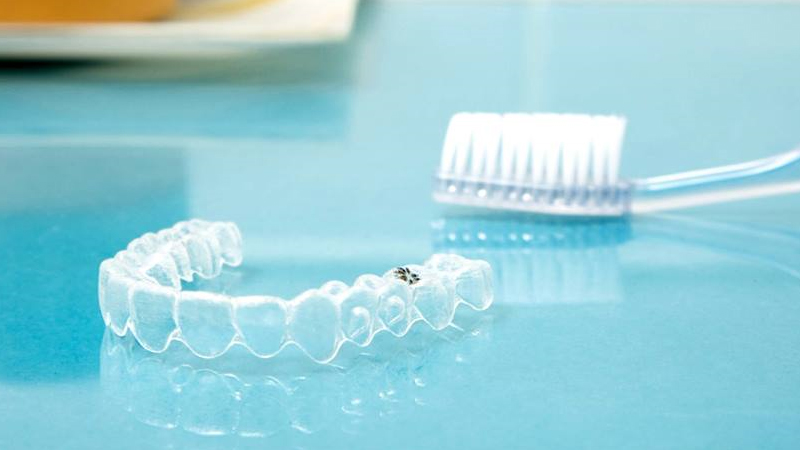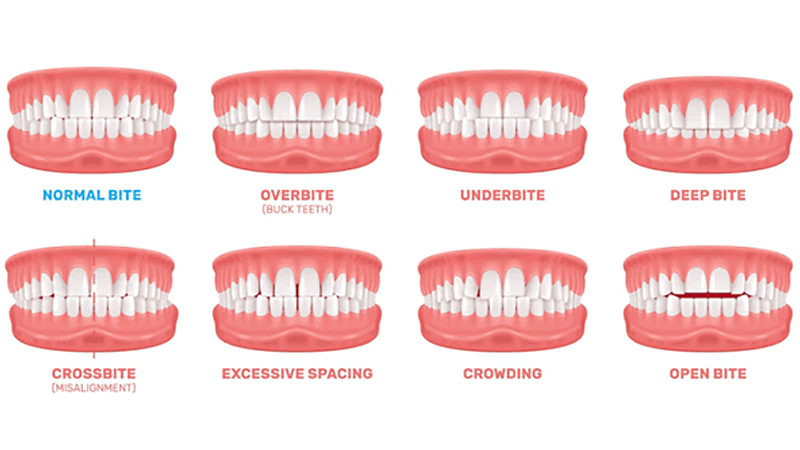Invisalign®

What Is Invisalign®?
Your Invisalign® treatment consists of a series of nearly invisible, removable aligners that you change every two weeks. Each aligner is individually manufactured for your teeth, and your teeth only. As you replace each aligner, your teeth will move – little by little, week by week – until they have straightened to the final position prescribed by your dental provider.
Our state-of-the-art 3D digital scanner takes a precise scan of your mouth. No messy moulds. Your treatment will be monitored through the complimentary cloud based program Dental Monitoring®.
What’s more, a virtual treatment plan generated by Align Technology’s unique ClinCheck® software shows the series of movements your teeth will go through over the course of the treatment. This allows you to see upfront what your teeth are expected to look like at the end of the treatment. From the results of the ClinCheck software, your custom-made, clear aligners are produced especially for you.
If you’re ready for a smile that transforms your appearance, Invisalign is your answer. Although there are many choices out there, no other treatment works as comfortably as Invisalign.
Invisalign is the best way to transform your smile without interfering with your day-to-day life.
Why We Recommend Invisalign®
Most people seek out information about Invisalign® for cosmetic reasons. They do not like the shape or position of their teeth. However, most people don’t realise that malocclusions (misaligned teeth) can cause overall damage to your teeth and increase the risk of other dental problems. The main goal of orthodontic treatment isn’t just aesthetics, but also the overall health of your teeth.
Malocclusion/Malalignment
According to Orthodontics Australia, the ideal bite should be the following:
- Looking from the front, when closing your mouth, there should be minimal overlap with 90% of your bottom teeth visible.
- From the side, your teeth should all fit together like puzzle pieces with the upper teeth sitting slightly in front of the lower teeth. There should not be any noticeable large gaps or crowding.
When teeth don’t fit this way, we call it a malocclusion or malalignment.

Most malocclusions are inherited. However, they can also be caused by childhood habits like thumb sucking. Malalignment isn’t just a childhood issue. Evidences shows that as we age, our teeth can shift position. There are several issues which can arise from misaligned teeth:
- Speech problems: Tongue movements and air flow are vital to how we speak. Crooked teeth or a misaligned bite can prevent certain tongue movements causing issues like a lisp.
- Biting & chewing problems: Some more severe alignment issues make biting down a struggle. Some people also notice they frequently bite their cheeks or tongue.
- Oral hygiene: Having overcrowded or rotated teeth can make it near impossible to clean between them. The bristles of the toothbrush cannot reach and even floss may not fit. This allows plaque and bacteria to build up which leads to gum disease and decay.
- TMJ & grinding problems: A poor bite can force your jaw into an unnatural position causing inflammation and deterioration of the TMJ (Temporomandibular joint a.k.a. the jaw joint). Overtime, this can lead to a condition known as TMD (Temporomandibular Disorder) which causes headaches, jaw clicking, and pain in the jaw, shoulder and neck. There is also evidence which links misaligned bites to grinding.
- Dental treatments don’t last: We tend to find that for people who have malocclusions, their fillings or crowns might not last as long. A misaligned bite can put an abnormal amount of pressure in unusual places which can wear away restorations quicker than normal.
Invisalign® Vs. Braces
Both Invisalign® and braces are used to align teeth to an ideal position. Invisalign® can be used for most orthodontic work. However, complex cases will need to be seen by an orthodontist and require braces. Your general dentist can advise and refer onto an orthodontist.
Reasons people prefer Invisalign®:
- Invisalign® is far more discrete than traditional braces. Rarely can the aligners be spotted in photos or out and about.
- The aligners are made of a thin, soft plastic which many find more comfortable than metal braces. They are less likely to irritate the tongue and gums.
- Invisalign® does not require regular in-person consultations with your dentist unlike braces which require monthly appointments for adjustments. The progress of your Invisalign® is monitored by your dentist through an app where your dentist can advise you when to move to your next aligners.
- It is easier to maintain good oral hygiene as the aligners are removable. There is no worry about food getting stuck between wires and on brackets.
- There are no restrictions on your diet because the aligners can be removed to eat. There are a lot of foods which are not recommended with braces. These include apples, carrots, chips, nuts, popcorn & lollipops.
A Word Of Caution Regarding Online At-Home Aligners
Something that has popped up recently, are ‘do-it-yourself aligners’, whereby the consumer makes a DIY impression of their teeth and are then sent clear aligners to change every week. They are cheaper but there is a reason. There is no consultation with a dentist or essential x-rays to ensure the jaw bone is healthy enough for orthodontist. The Australian Society of Orthodontist strongly recommends you do your research before committing to at-home orthodontic treatment. You can read more about what they say by clicking here.
Compare For Yourself
Braces
- Price: Similar
- Average treatment time: 18-24 months
- General requirements: Visit orthodontist every month. Avoid eating chewy, crunchy, sticky or hard foods.
- Attachments on teeth: Metal brackets bonded to teeth & archwire connecting the brackets together.
- Hygiene: Food can easily get stuck on braces, therefore extra care with brushing & flossing is required.
- Emergency visits: More common. Wires can break & poke into the gums. Brackets can also come loose.
- Limitations: Braces can fix almost all orthodontic problems, including complex misalignments. However, sometimes surgery is required.
Invisalign®
- Price: Similar
- Average treatment time: 18-24 months
- General requirements: Change every 1-2 weeks and communicate with dentist via app. Wear aligner for 20-22 hours per day.
- Attachments on teeth: Tooth coloured 'buttons' attached to teeth, along with a thin, clear aligner (which can be removed).
- Hygiene: Invisalign® can be removed and teeth can be brushed & flossed as normal. The aligners should also be cleaned.
- Emergency visits: Rare
- Limitations: Invisalign® cannot fix serious and complicated misalignments. Your dentist will be able to determine if you are a suitable candidate.
Book Your Invisalign® Consultation Today!
Discover more about Invisalign® with your New Patient Offer + FREE aligner consultation. Call iDental Surgery on (02) 9557 7775 or book an appointment online here.

